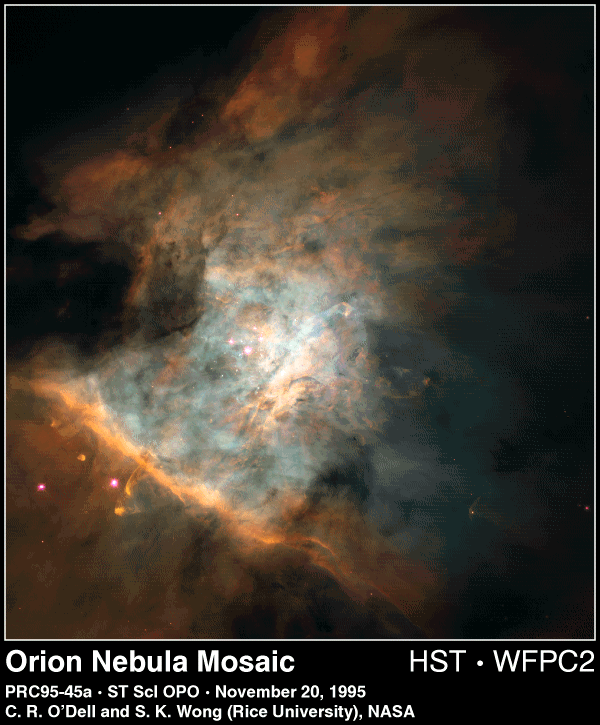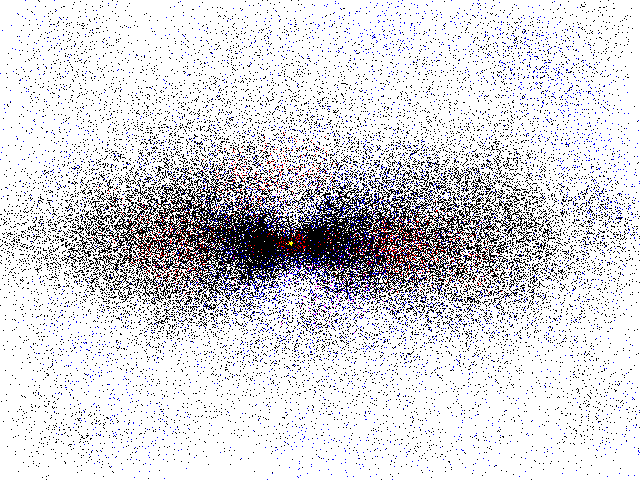Issues in the formation of the solar system
Let's think about how the solar system might have formed.
Some relevant physics principles:
- Gravity pulls everyting together.
- Gas pressure resists gas being compressed.
- Gas pressure increases when the volume gets smaller or the temperature
gets bigger.
- The gas temperature increases when the gas is compressed.
- The gravitational force of a massive object produces elliptical orbits
with the massive object at one focus.
What can happen to a large cloud of gas and dust. Think about
- instability;
- stability.

A model for the start of the solar system
In a giant cloud of gas and dust, a chance occurance creates a region
of high density. This makes the region unstable to gravitational collapse.

- In the center is the proto-sun.
- It is a ball of gas.
- Gravity pulls the gas in, gas pressure pushes out, balancing the gravity.
- Thus the proto-sun is approximately stable.
- It gradually shrinks and gets hotter inside.
- Finally, nuclear fusion starts in the center.
- This provides more heat and thus more gas pressure.
- Now the proto-sun is the sun, a genuine star.
- The shrinking is stopped and the sun is very stable.
- On the outside is a disk of gas and dust.
- The gas and dust is in orbit around the proto-sun.
- With circular orbits in a disk, the gas and dust is approximately
stable.
- It is hot near the proto-sun, cold far from the center.
- Thus iron dust grains can survive well nearest to the proto-sun without
being vaporized.
- Iron and rock grains can survive well a little farther away.
- Iron, rock and ice (as well as other frozen subsances like methane
and ammonia) can all survive far away from the protosun.
- Planets con form by gravitational attraction from the available
materials in the disk.
As we study the planets, we should think about whether we can deduce
consequences of this model that can be tested against what we see
in the planets.
One consequence that we have already noted: according to the model, the inner planets should be more dense than the outer planets. That is what we found
for Mercury, Earth, and Neptune.
ASTR 121 Home
Davison E. Soper, Institute of Theoretical Science,
University of Oregon, Eugene OR 97403 USA
soper@bovine.uoregon.edu

